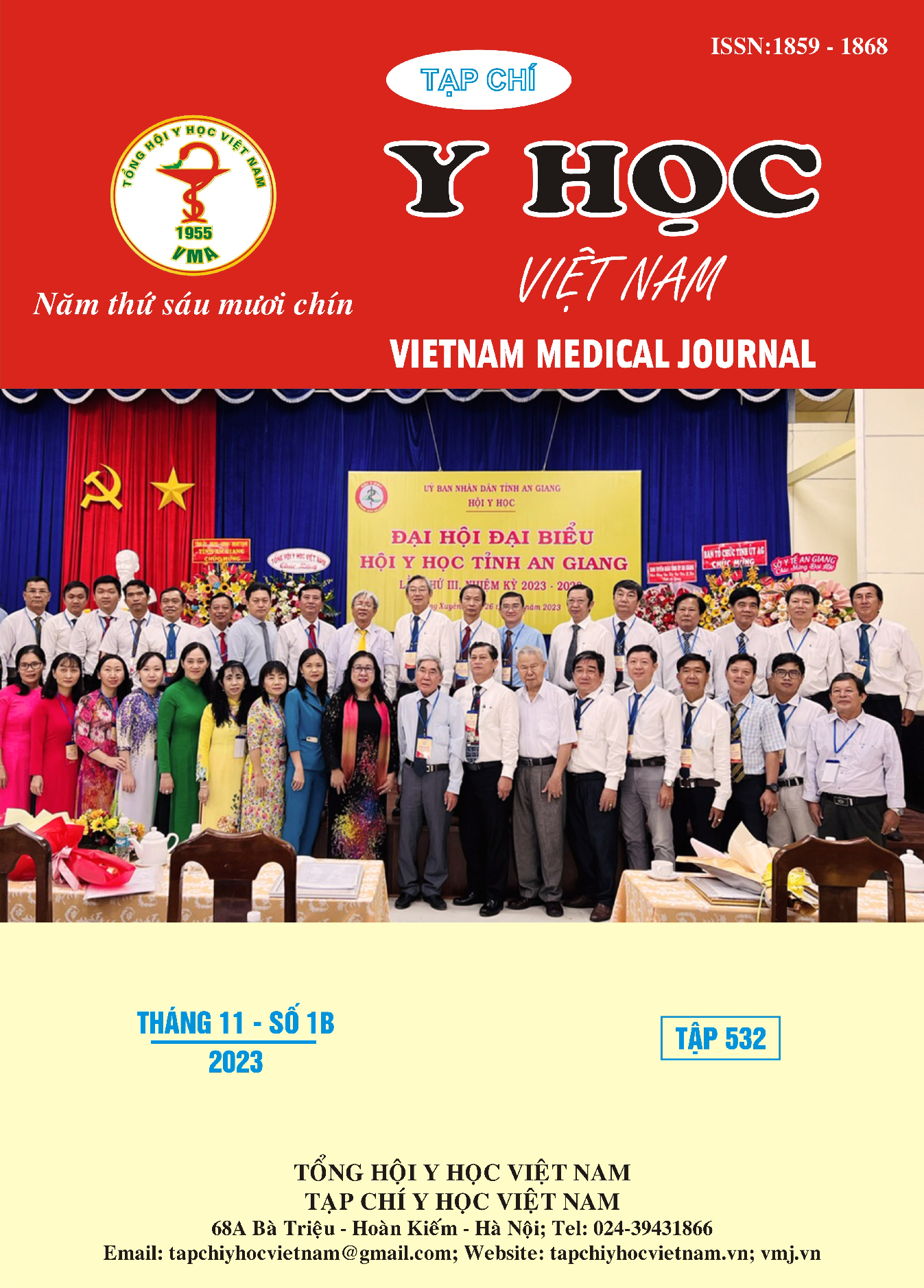VALUE OF PRENATAL SCREENING TO DETECT PREGNANCY TRISOMY 13, TRISOMY 18, TRISOMY 21 IN THANH KHE DISTRICT - DA NANG AND BIEN HOA CITY - DONG NAI
Main Article Content
Abstract
Objective: Evaluating the value of prenatal screening to detect trisomy 13, trisomy 18, and trisomy 21 in Thanh Khe district - Da Nang and Bien Hoa city - Dong Nai. Subjects and methodology: Cross-sectional descriptive study on pregnant women with gestational age from 11 weeks to 13 weeks and 6 days had a double test and pregnant women with a gestational age from 15 weeks to 22 weeks had a triple test at the above research location. Results: The high-risk detection rate is mainly from maternal serum testing, overall for Thanh Khe - Da Nang and Bien Hoa with double test is 10.24%, with triple test is 11.15%. The overall high risk rate according to maternal age for the 2 localities for pregnant women with double test is 8.36%, for pregnant women with triple test is 11.15%. The high risk rate according to ultrasound in the first 3 months is 1.32%. Fetal ultrasound effectiveness: in Thanh Khe - Da Nang: detecting morphologically abnormal fetuses through ultrasound is 1.43%. The rate of pregnant women having a fetal ultrasound is 99.52%; In Bien Hoa: detecting abnormal fetal morphology through ultrasound is 0.78%. The rate of pregnant women having a fetal ultrasound is 99.79%. Efficiency of prenatal diagnosis: in Thanh Khe: The rate of detecting chromosomal abnormalities is 6.25%; in Bien Hoa: The detection rate of aneuploidy is 3.88%. Conclusion: For reducing pregnancy abnormalities and birth defects, it is necessary to systematically implement prenatal screening measures. For dioxin hotspots like Da Nang and Bien Hoa, it is necessary to have measures to prevent birth defects and properly implement prenatal screening and diagnosis.
Article Details
Keywords
prenatal screening, trisomy 13, trisomy 18, trisomy 21.
References
2. Nguyen Thi Ngoc Phuong (2002). Long-term effects of dioxin/agent orange on reproductive health of Vietnamese women. Vietnam- United States scientific conference on Human health and Environmental effects of Agent Orange / dioxin, 430-442
3. Nguyễn Văn Nguyên, Những biến đổi y - sinh học ở một cộng đồng sống trong vùng còn chất độc da cam/dioxin. Hội nghị khoa học Việt - Mỹ về ảnh hưởng của chất độc da cam/ dioxin lên sức khoẻ con người và môi trường, 2002: 116 - 126
4. Trương Quang Vinh, Nguyễn Duy Ánh, Trần Đức Phấn, Lưu Thị Hồng, Nguyễn Thị Mai Anh. Sàng lọc NIPT cho thai phụ để phát hiện thai trisomy 13, trisomy 18 và trisomy 21 tại bệnh viện Phụ sản Hà Nội năm 2019. Tạp chí Y học Việt Nam, tập 497,12/2020: 238-244
5. Palomaki G. E., Eklund E. E., Neveux L. M., Lambert Messerlian G. M. Evaluating first trimester maternal serum screening combinations for Down syndrome suitable for use with reflexive secondary screening via sequencing of cell free DNA: high detection with low rates of invasive procedures. Prenat. Diagn. 2015;35(8): 789 - 796.
6. Tran Duc Phan (2010). Health status and reproductive health surveillance in Viet Nam. 9th annual scientific congress of Asia Pacific association of medical toxicology collaboration against poisoning from regional experience to global vision, 45.
7. Trần Danh Cường (2009), “Một số nhận xét về kết quả chọc hút nước ối trong chẩn đoán trước sinh tại Bệnh viện phụ sản Trung Ương”. Hội nghị sản phụ khoa Việt - Pháp, 297 - 331.
8. Hasegawa J., Nakamura M., Sekizawa A. How do the trends in the prenatal diagnosis of aneuploidy change after a non-invasive prenataltest becomes available? A Japanese single center study. J. Med. Ultrason. 2015;42(2): 195 - 198.


